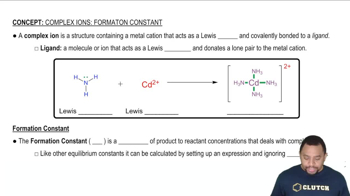Here are the essential concepts you must grasp in order to answer the question correctly.
Net Ionic Equations
A net ionic equation represents the chemical species that are involved in a reaction, excluding spectator ions that do not participate in the reaction. It focuses on the ions and molecules that undergo a change during the reaction, providing a clearer picture of the actual chemical process. To write a net ionic equation, one must first write the complete ionic equation and then remove the spectator ions.
Recommended video:
Solubility Product Constant (Ksp)
The solubility product constant (Ksp) is an equilibrium constant that applies to the solubility of sparingly soluble ionic compounds. It quantifies the extent to which a compound can dissolve in water, expressed as the product of the molar concentrations of the ions, each raised to the power of their coefficients in the balanced dissolution equation. Understanding Ksp is crucial for predicting whether a precipitate will form in a solution.
Recommended video:
Solubility Product Constant
Formation Constant (Kf)
The formation constant (Kf) is a measure of the stability of a complex ion in solution, representing the equilibrium between the complex ion and its constituent ions. It is defined as the ratio of the concentration of the complex ion to the concentrations of the free ions, each raised to the power of their coefficients. A high Kf value indicates a stable complex, which is important for understanding the behavior of metal ions in coordination chemistry.
Recommended video:
Complex Ions and Formation Constant
 Verified step by step guidance
Verified step by step guidance


